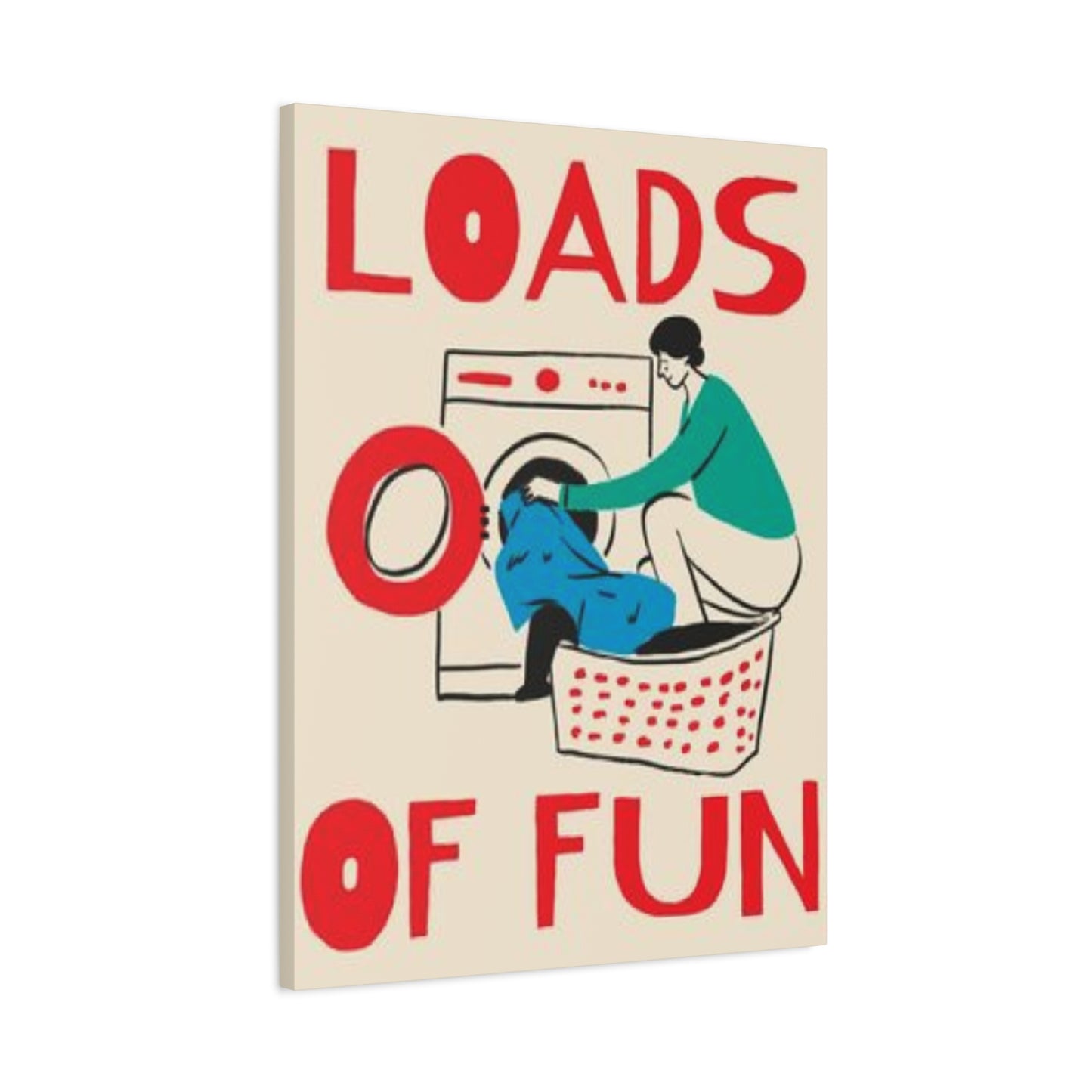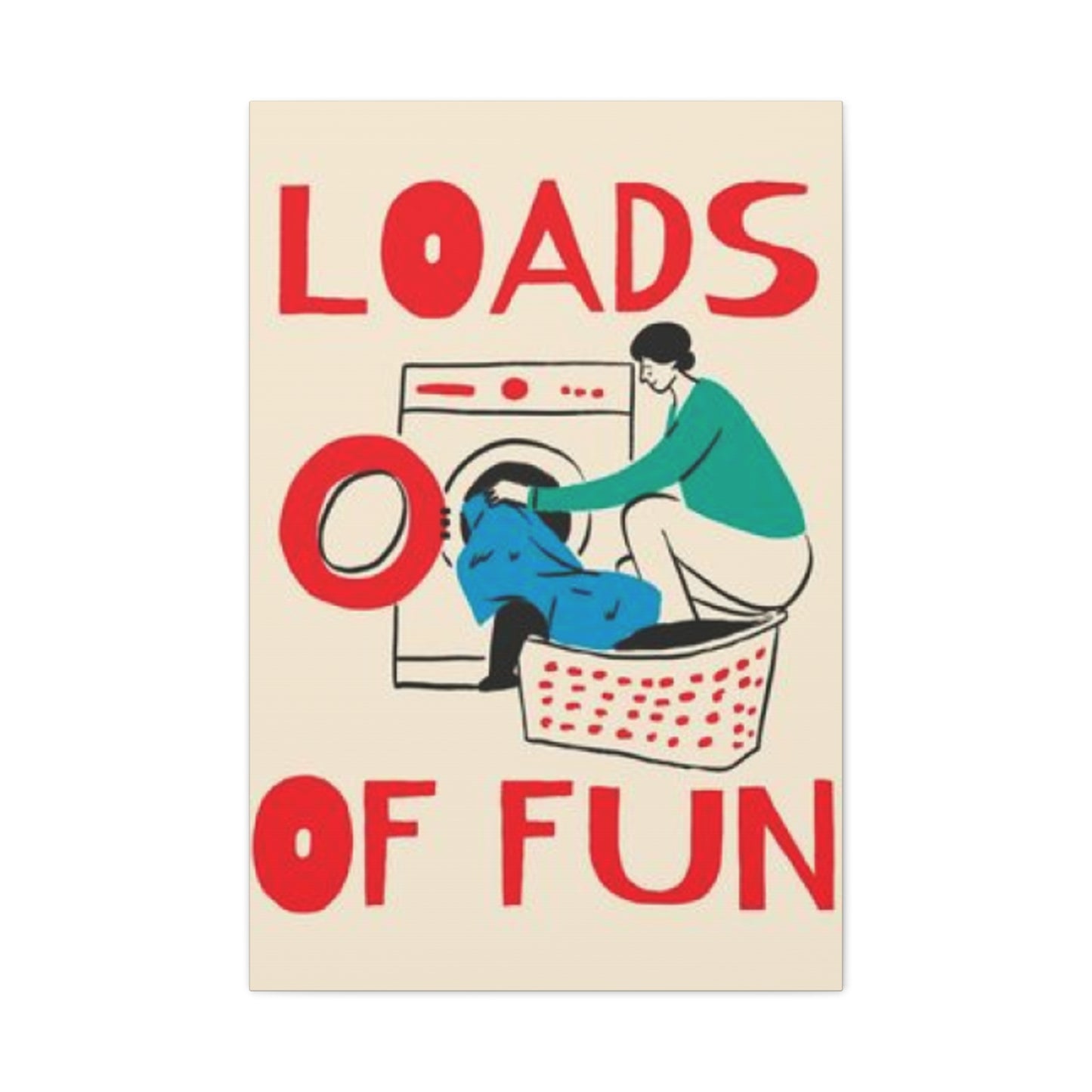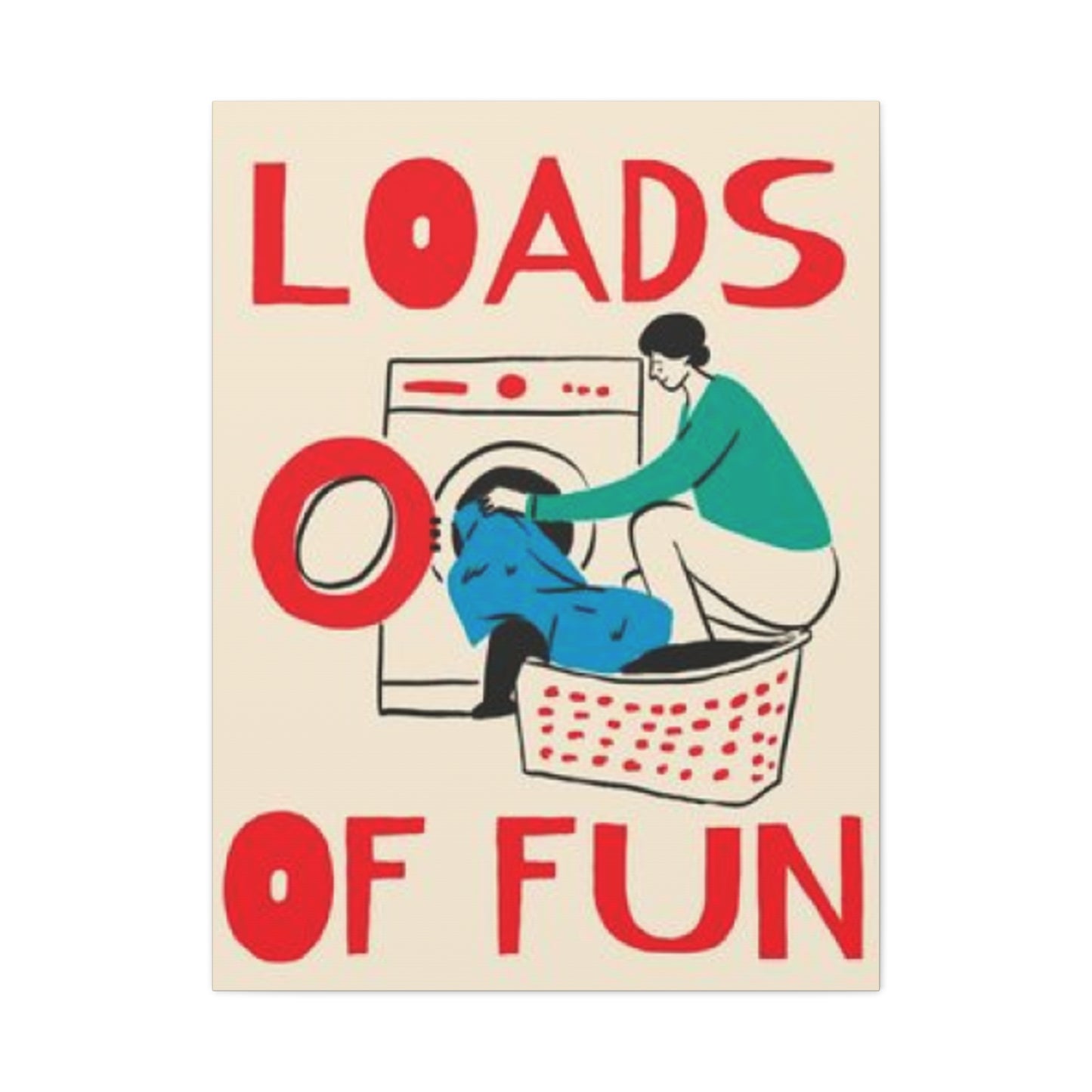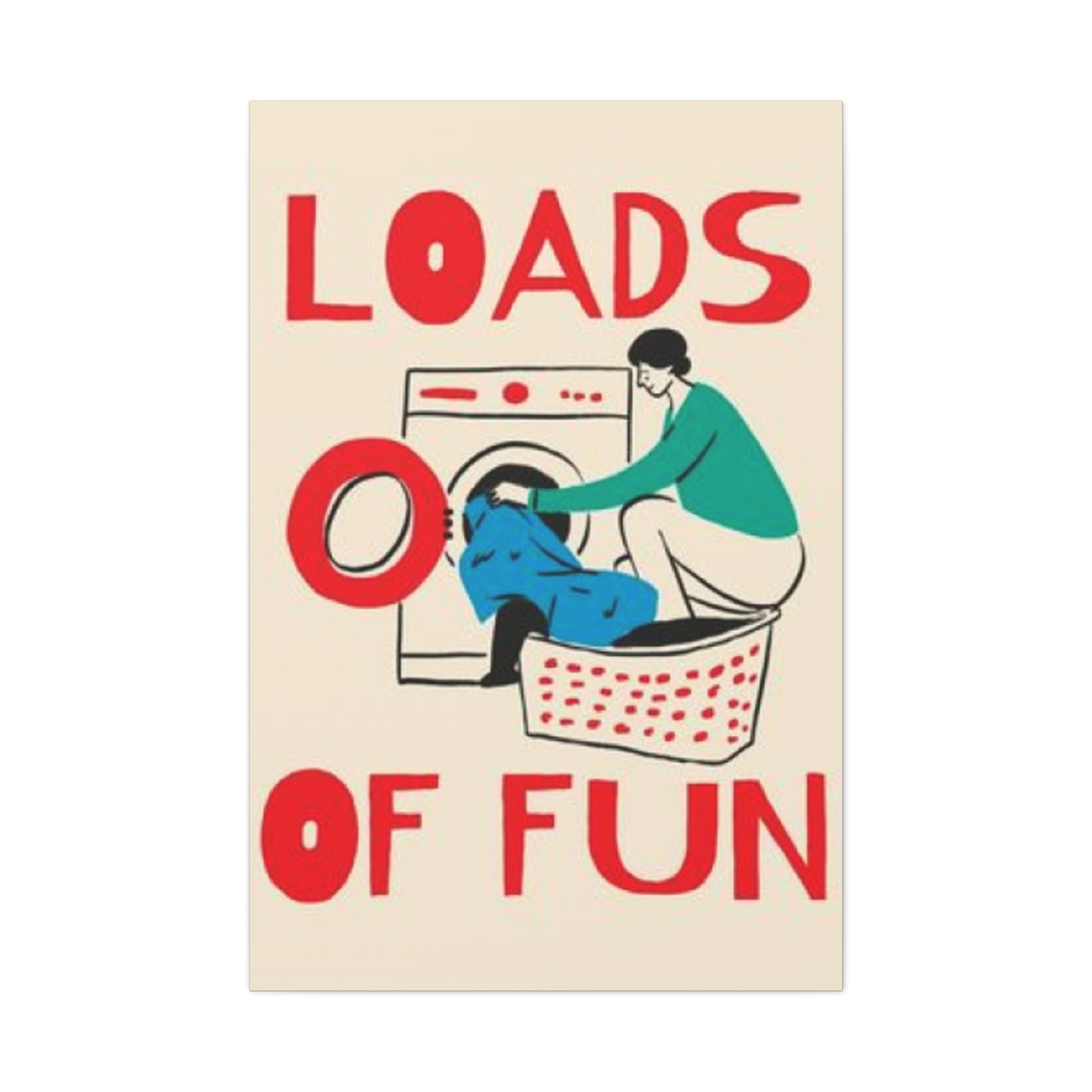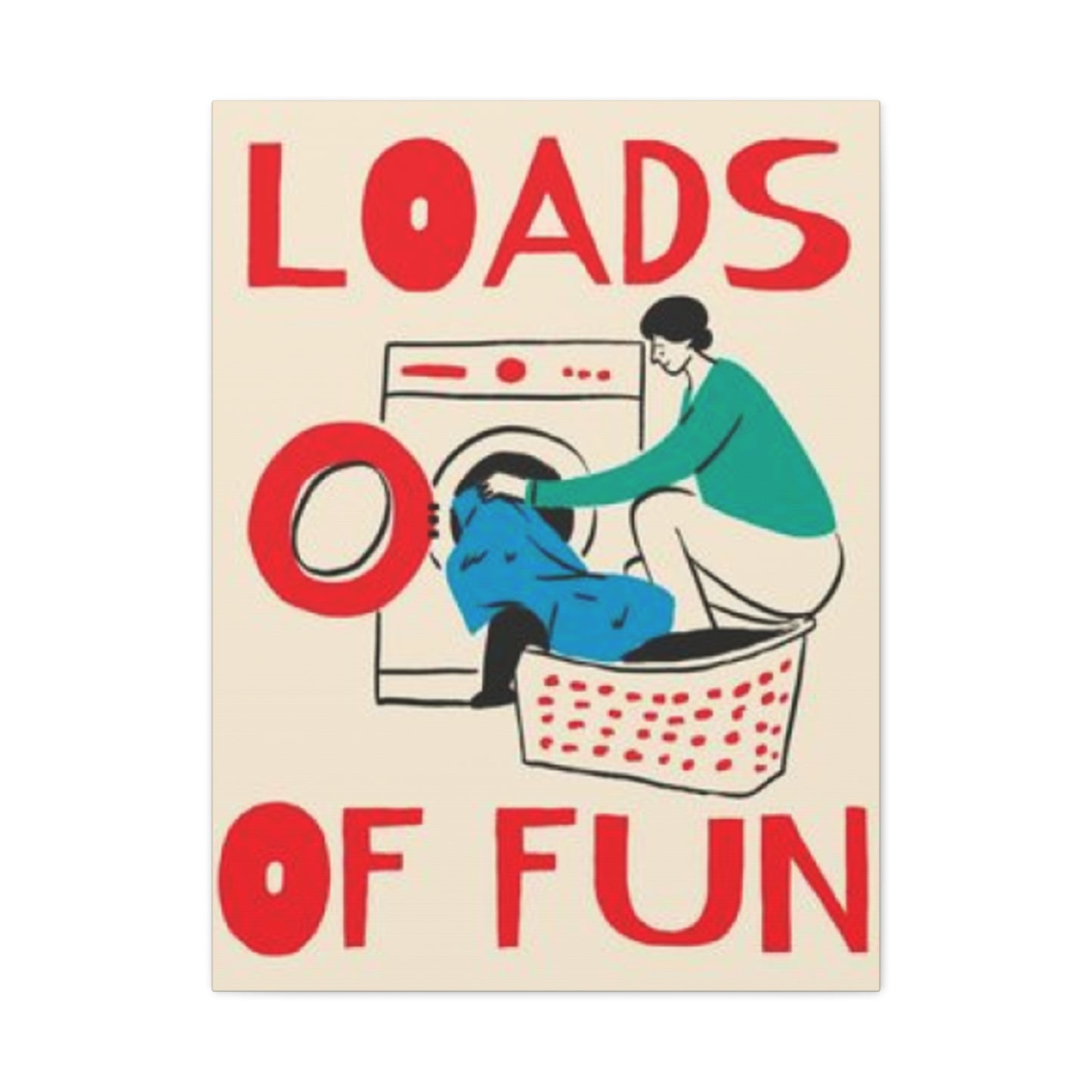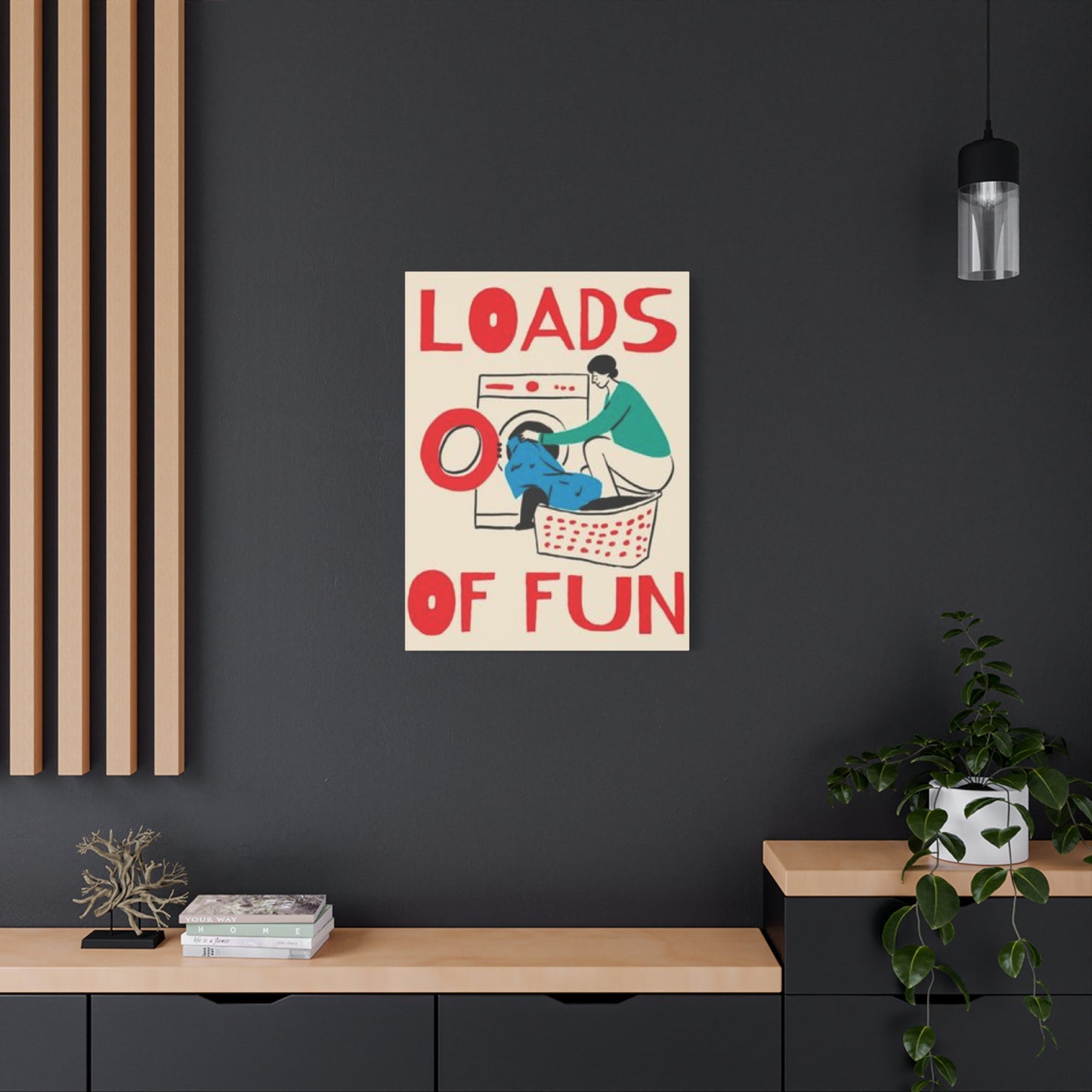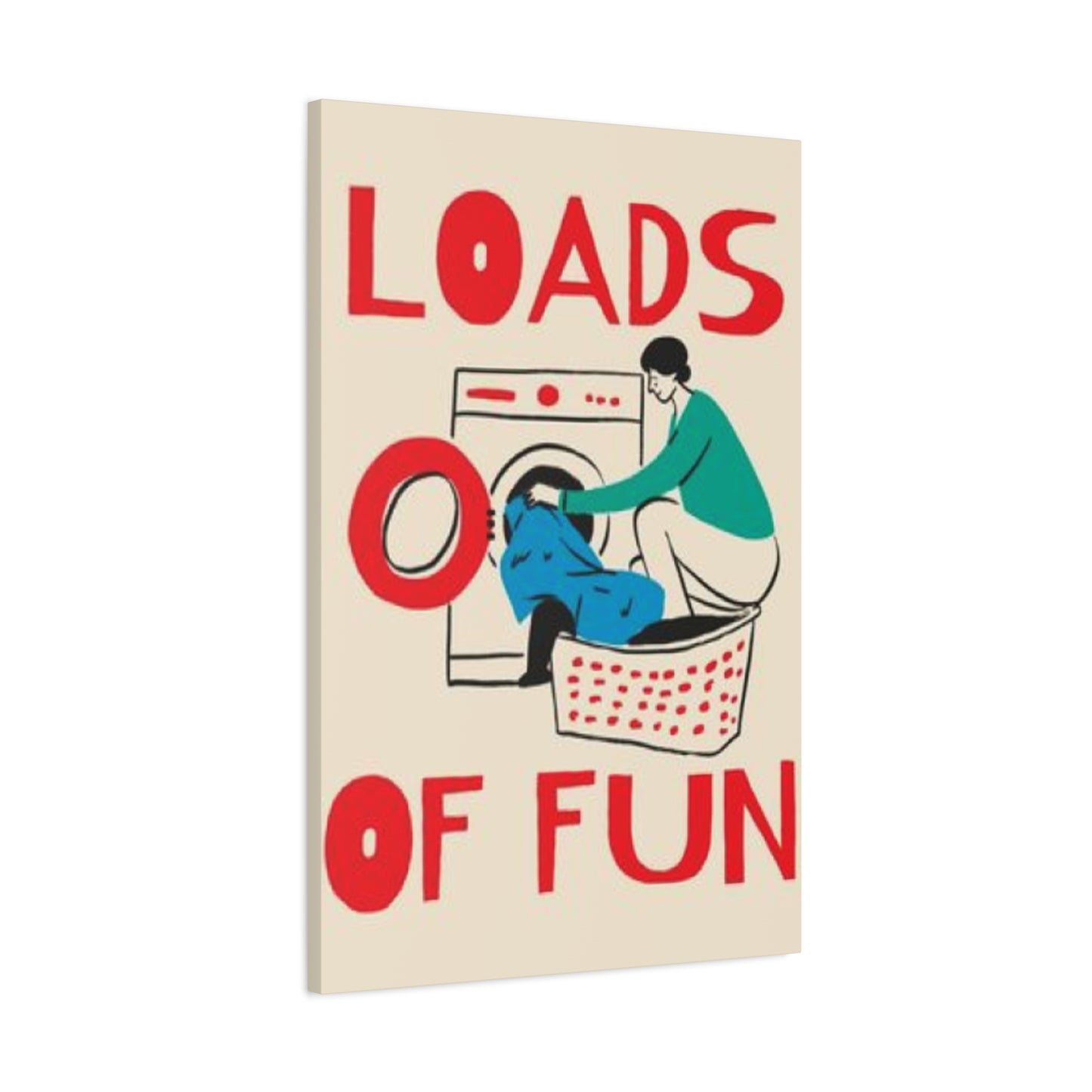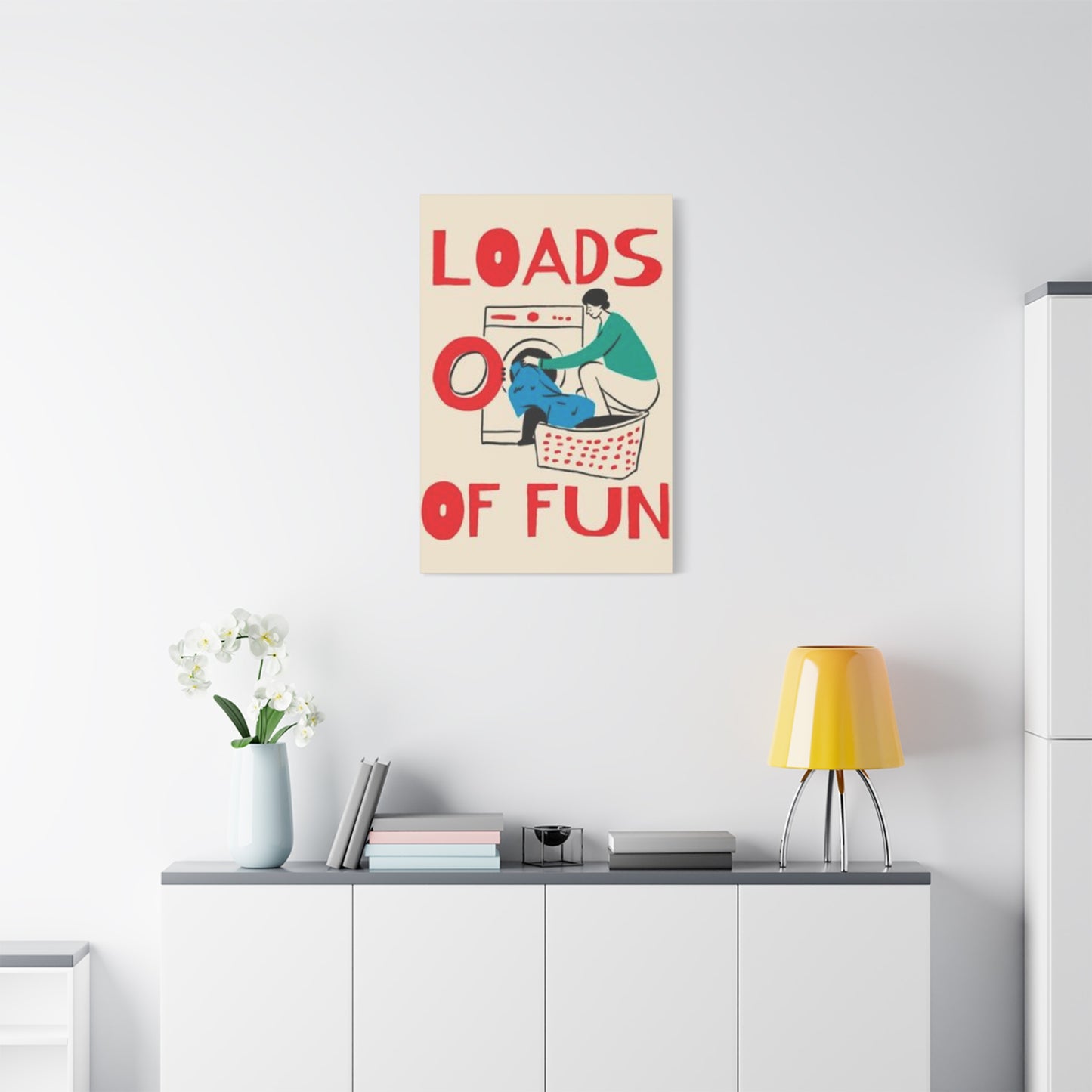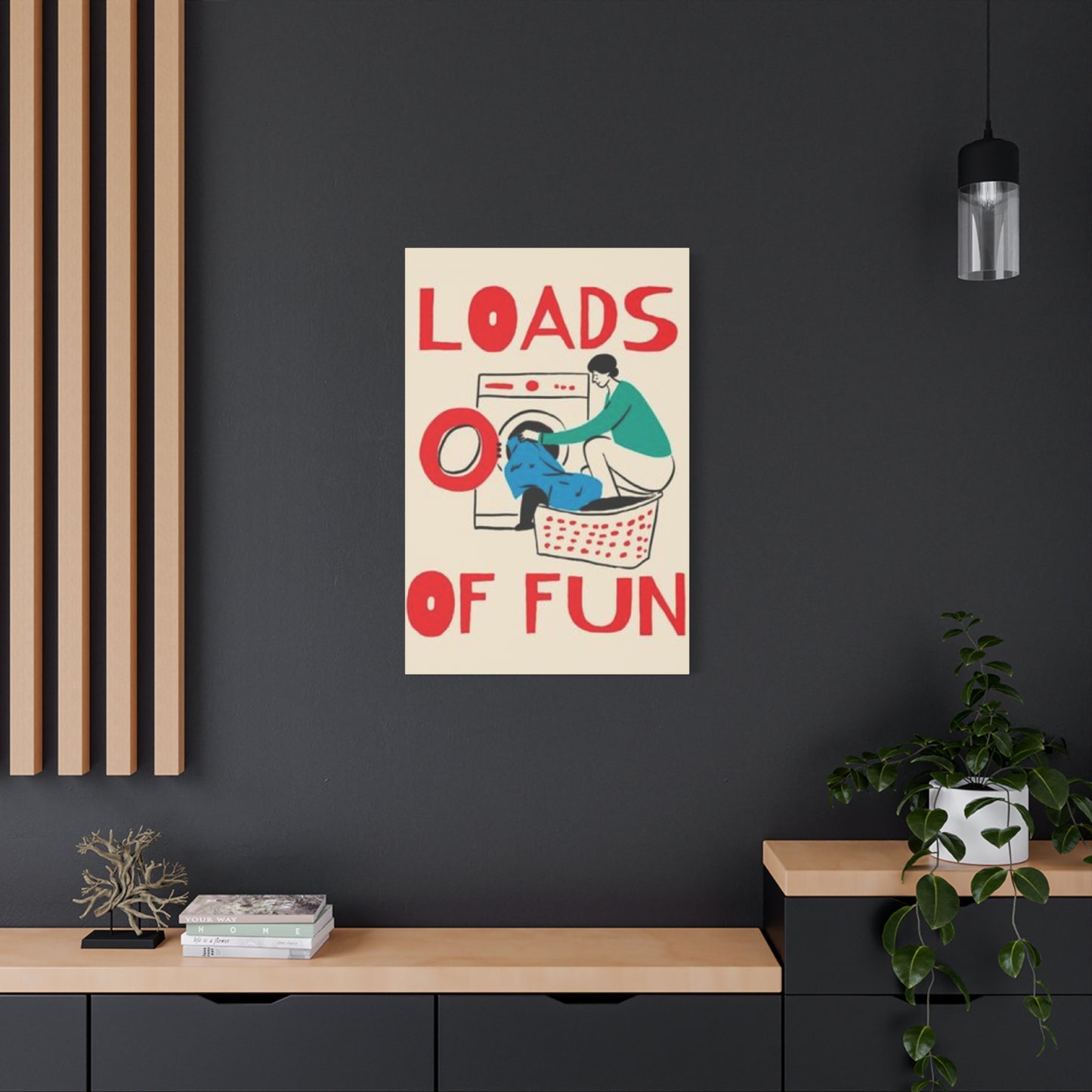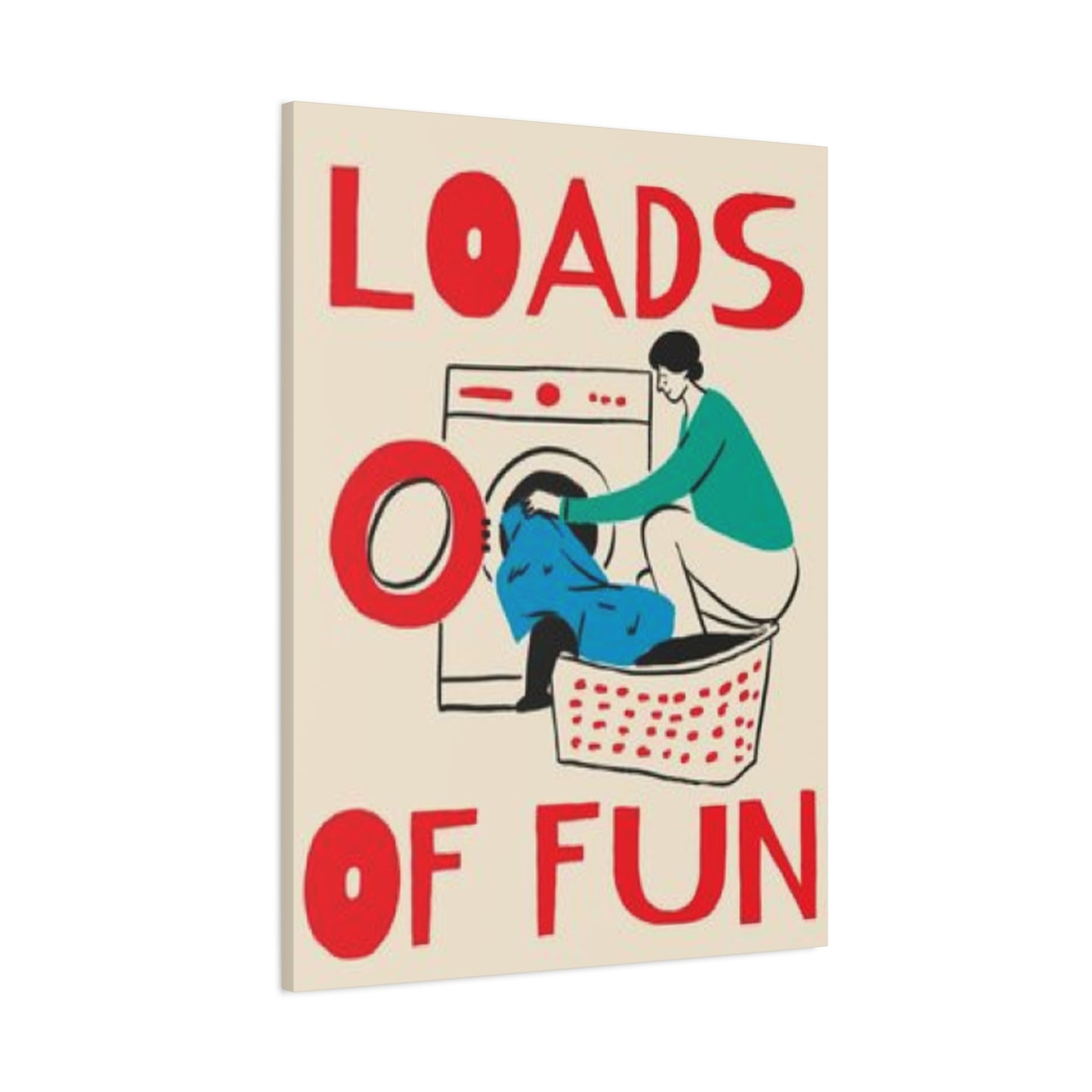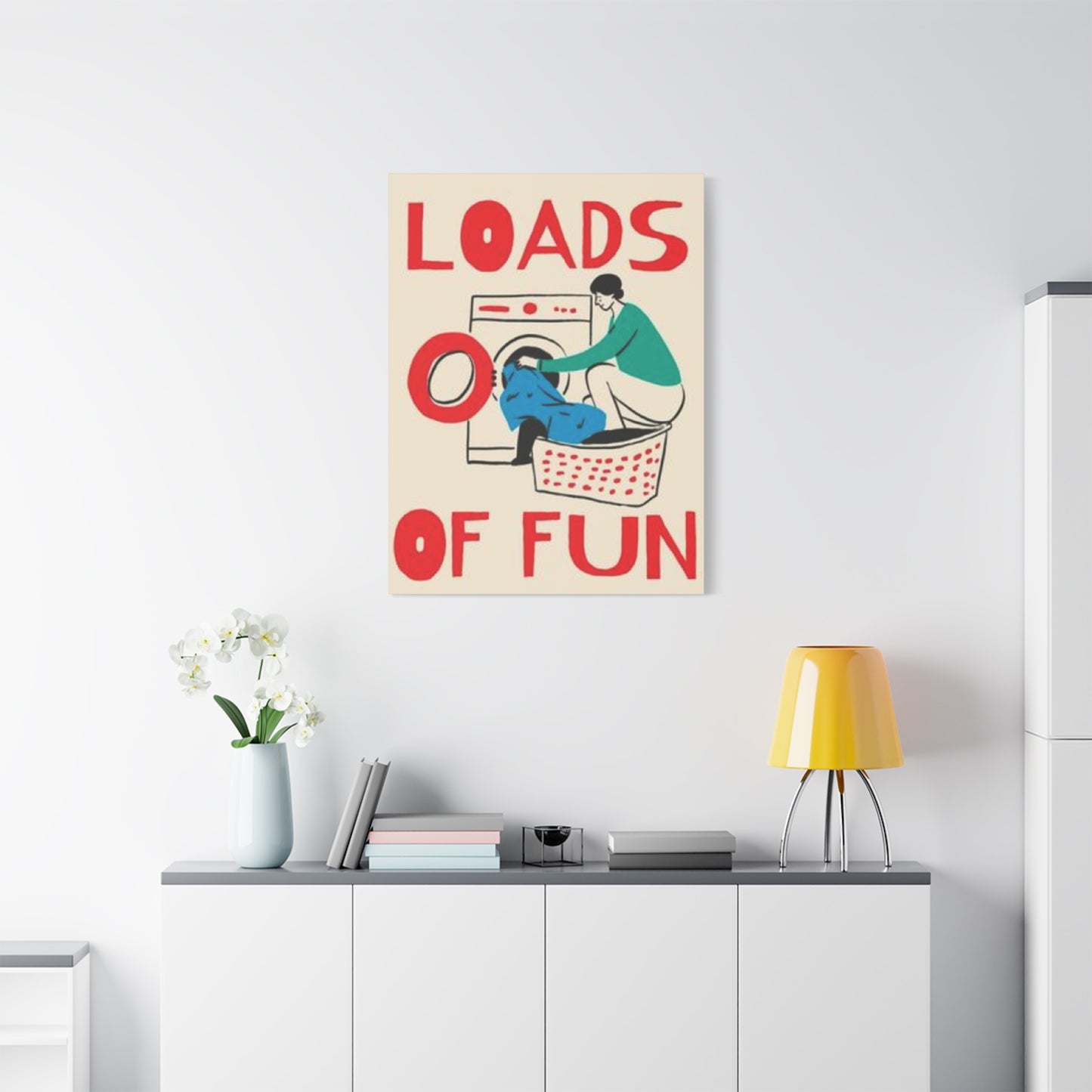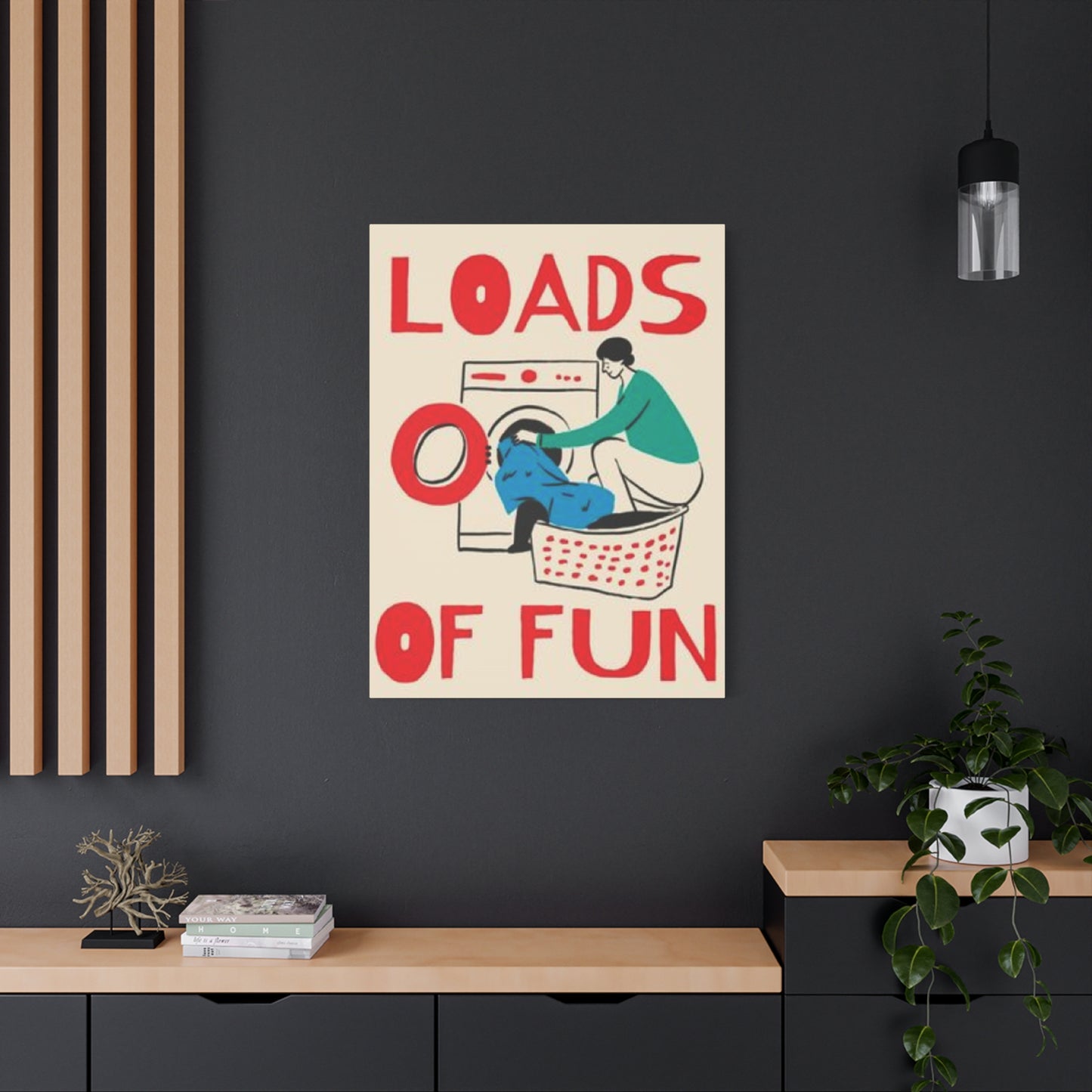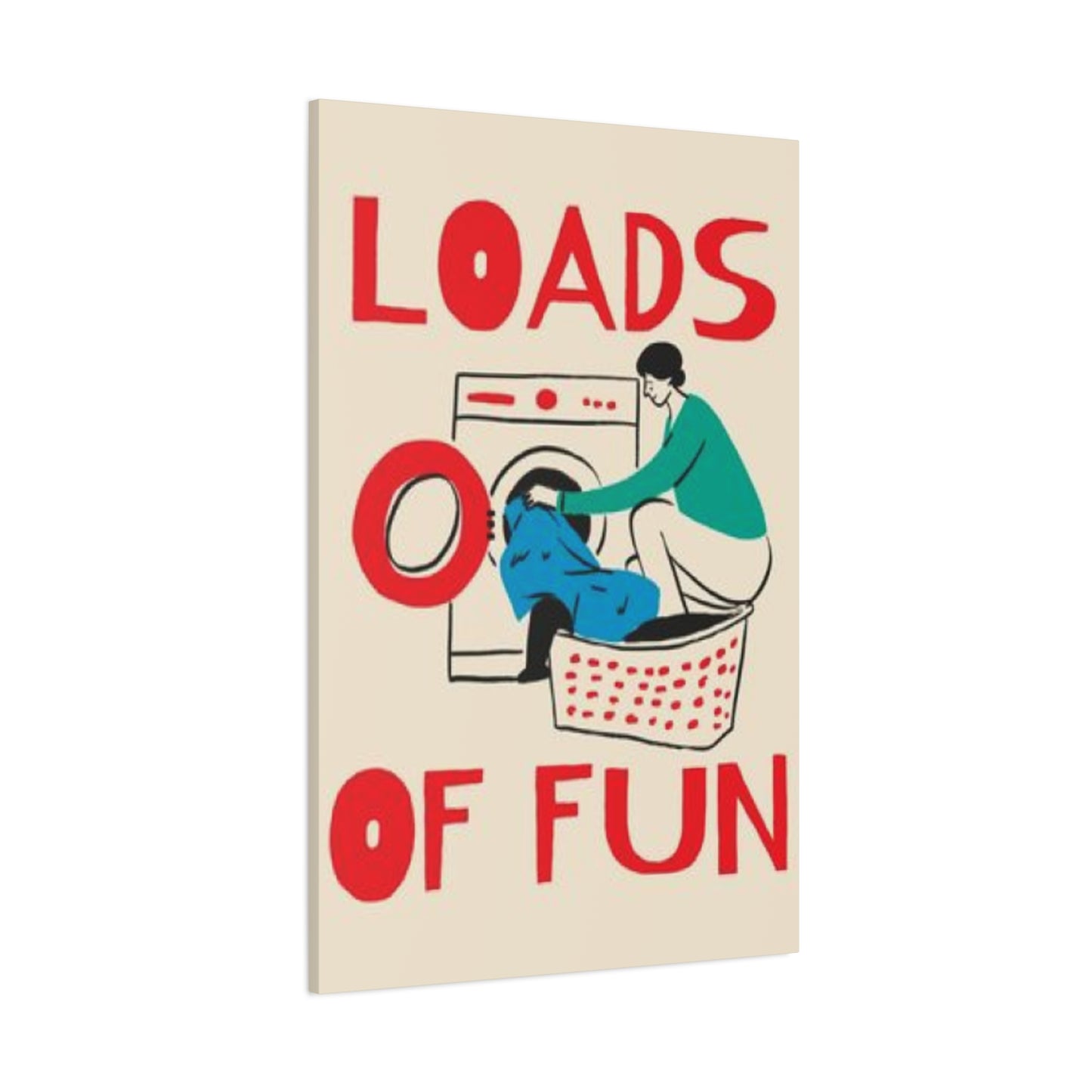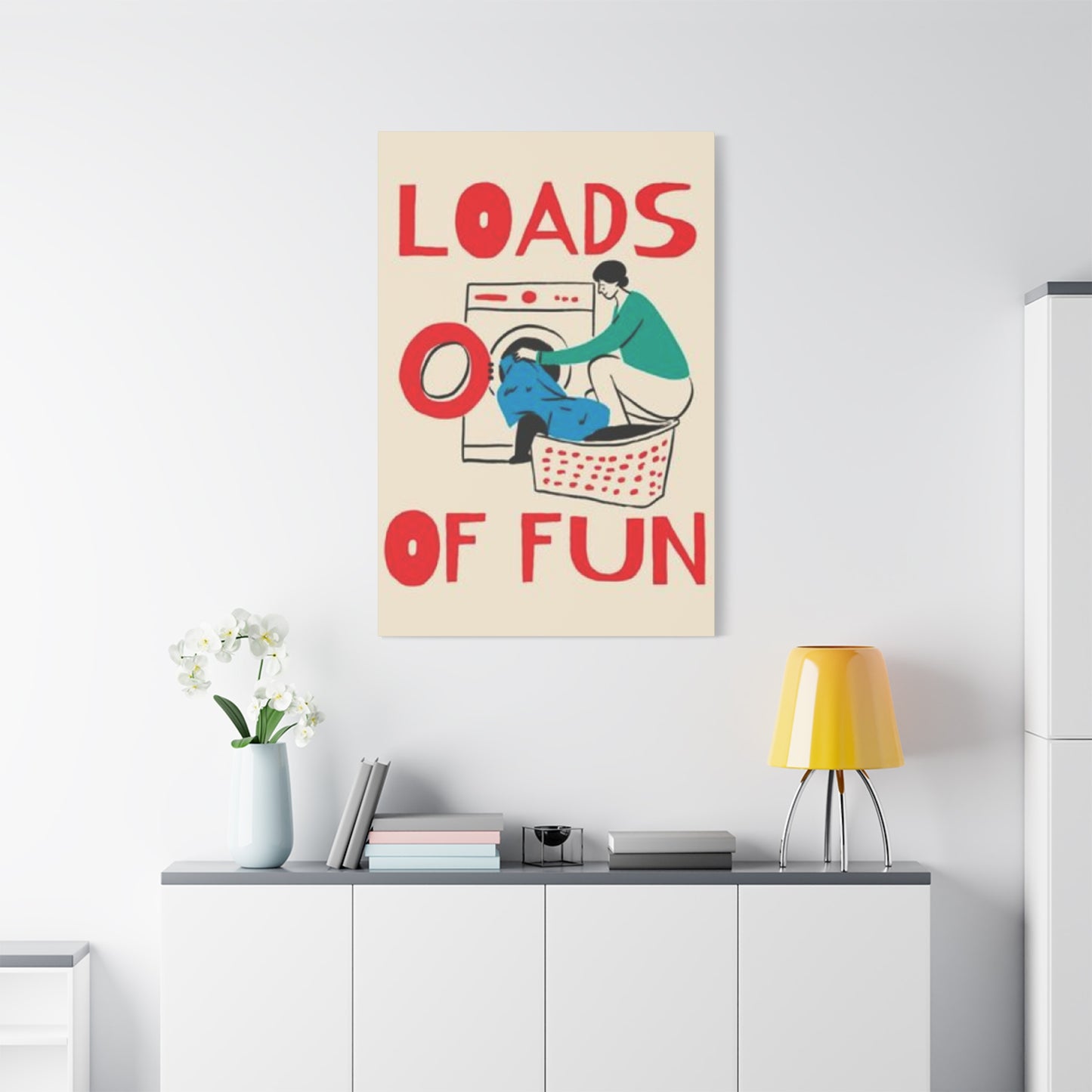Laundry Wall Art: Transforming Mundane Chore Spaces into Joyful Sanctuaries
The humble laundry area often receives minimal attention when it comes to decorative elements, yet this frequently visited room deserves the same thoughtful consideration as any other part of your home. Laundry wall art has emerged as a powerful tool for converting these utilitarian areas into vibrant, welcoming environments that make household tasks feel less burdensome and more enjoyable. By incorporating carefully selected artistic elements, homeowners can create atmospheres that inspire productivity while maintaining aesthetic appeal.
Modern homeowners increasingly recognize that every corner of their dwelling should reflect their personality and contribute to their overall well-being. The laundry area, traditionally viewed as purely functional, now presents an opportunity to infuse creativity and warmth into daily routines. Through strategic placement of engaging visual elements, these rooms can become sources of motivation rather than spaces to avoid.
The psychological impact of surrounding ourselves with uplifting imagery cannot be understated. When we transform mundane environments with thoughtful artistic choices, we create positive associations with necessary tasks. This approach to domestic decoration acknowledges that our homes should nurture both our practical needs and our emotional well-being.
Contemporary design trends emphasize the importance of cohesive aesthetic experiences throughout living environments. No longer are utility rooms relegated to purely functional considerations; instead, they become integral components of comprehensive home design strategies. This shift reflects a broader understanding of how our physical surroundings influence our daily experiences and overall quality of life.
Brightening Laundry Rooms with Fun Wall Art
Transforming laundry areas through strategic artistic placement begins with understanding how color, imagery, and composition work together to create inviting atmospheres. The right combination of visual elements can completely alter the perception of these traditionally overlooked areas, turning them into delightful retreats within the home.
Color psychology plays a crucial role in creating environments that energize and inspire. Warm tones like sunny yellows, vibrant oranges, and cheerful coral shades can instantly lift spirits and create feelings of optimism. Cool blues and refreshing greens evoke tranquility and cleanliness, perfect for areas dedicated to washing and organizing clothing. Neutral palettes with strategic pops of color allow for flexibility while maintaining sophisticated appeal.
The scale and proportion of artistic elements significantly impact the overall atmosphere of compact areas. Large-scale pieces can create dramatic focal points that draw attention away from utilitarian fixtures, while smaller grouped compositions offer versatility and visual interest through variety. Understanding how to balance different sizes ensures that the room feels intentionally designed rather than cluttered or overwhelming.
Lighting considerations become paramount when selecting and displaying artistic elements in laundry areas. Natural light sources may be limited, making it essential to choose pieces that remain vibrant under artificial illumination. Glossy finishes and metallic accents can help reflect available light, creating brighter, more inviting environments even in windowless rooms.
Texture adds another dimension to visual appeal, creating depth and interest through varied surface treatments. Combining smooth photographic prints with textured canvas pieces or three-dimensional elements creates layered compositions that engage multiple senses. This approach prevents the clinical feeling often associated with purely functional areas.
The integration of artistic elements should complement rather than compete with existing fixtures and storage solutions. Successful transformations consider the relationship between decorative and practical elements, ensuring that neither overwhelms the other. This balance creates harmonious environments where both beauty and function thrive.
Seasonal adaptability allows for ongoing refreshment of laundry room atmospheres. Rotating different pieces throughout the year keeps the environment feeling fresh and prevents decorative fatigue. This approach also allows homeowners to experiment with different styles and themes without committing to permanent installations.
Personal expression remains central to creating meaningful decorative schemes. The most successful laundry room transformations reflect the personalities and preferences of their users, creating authentic connections between individuals and their domestic environments. This personal touch transforms utilitarian areas into true extensions of home.
Why "Loads of Fun" Posters are Perfect for Laundry Environments
Humor-infused posters featuring "loads of fun" messaging represent an ideal marriage of wit and functionality in laundry room decoration. These clever word plays acknowledge the nature of laundry tasks while injecting levity into routine domestic activities. The popularity of such designs reflects a broader cultural shift toward finding joy in everyday moments.
The effectiveness of pun-based laundry artwork stems from its ability to reframe mundane activities through playful language. By transforming literal descriptions of laundry loads into opportunities for wordplay, these pieces create positive associations with necessary household tasks. This psychological reframing can significantly impact how individuals approach and experience their domestic responsibilities.
Typography-focused designs offer particular advantages in laundry settings where wall area may be limited. Text-based artwork maximizes visual impact while minimizing physical footprint, making them ideal for compact areas. Bold lettering and creative font choices ensure readability while maintaining artistic appeal, creating pieces that function effectively at various viewing distances.
The versatility of "loads of fun" messaging allows for numerous creative interpretations and design approaches. Some pieces feature minimalist typography on clean backgrounds, while others incorporate elaborate illustrations, decorative elements, or photographic components. This range ensures compatibility with diverse decorative styles and personal preferences.
Color combinations in these humorous pieces often reflect the fresh, clean aesthetic associated with laundry activities. Crisp whites, powder blues, sage greens, and sunny yellows create associations with cleanliness and renewal. However, bolder color schemes can add energy and personality to areas that might otherwise feel sterile or uninviting.
The accessibility of pun-based humor makes these pieces appealing to diverse audiences and age groups. Unlike more sophisticated or niche humor styles, wordplay based on common household activities resonates broadly, making such pieces excellent choices for family homes or shared living situations. This universal appeal contributes to their enduring popularity.
Installation flexibility represents another advantage of poster-style laundry artwork. Unlike heavy or complex installations, posters can be easily mounted, repositioned, or replaced as preferences change. This adaptability allows for experimentation and seasonal updates without significant time or financial investment.
The affordability of poster-style artwork makes laundry room decoration accessible to homeowners with varying budgets. High-quality prints can be obtained at reasonable costs, allowing for multiple pieces or frequent updates. This economic accessibility encourages creative experimentation and personal expression in utility room design.
Playful Typography in Laundry Wall Art
Typography serves as both artistic medium and communication tool in laundry room decoration, offering endless possibilities for creative expression while maintaining clear messaging. The careful selection and arrangement of fonts, sizes, and layouts can dramatically impact both the aesthetic appeal and psychological effect of text-based artwork in these utility areas.
Font personality plays a crucial role in establishing the overall mood and character of typographic laundry artwork. Script fonts convey elegance and sophistication, while bold sans-serif options project confidence and modernity. Handwritten-style typefaces add personal warmth and authenticity, creating intimate connections between artwork and viewers. Understanding these font personalities enables more intentional design choices.
Hierarchy within typographic compositions guides viewer attention and creates visual flow throughout the piece. Primary messages typically receive the largest, boldest treatment, while supporting text elements use smaller, lighter fonts. This hierarchical approach ensures clear communication while maintaining balanced compositions that feel organized rather than chaotic.
Color application in typography offers opportunities for both subtle sophistication and bold statement-making. Monochromatic schemes create elegant, timeless appeal, while contrasting colors add energy and visual interest. Gradient effects and color transitions can create depth and movement within static text elements, adding dynamic qualities to otherwise simple designs.
Letter spacing and line spacing significantly impact both readability and visual appeal of typographic artwork. Generous spacing creates clean, modern aesthetics while tight spacing can feel more intimate and cozy. Understanding how spacing affects perception allows for more intentional design choices that support desired atmospheric goals.
The integration of decorative elements with typography creates opportunities for enhanced visual interest and thematic reinforcement. Laundry-related icons, patterns, or illustrations can complement textual messages while maintaining clear hierarchies. These combinations prevent purely text-based pieces from feeling stark or incomplete.
Mixed typography approaches combine multiple font families within single compositions, creating dynamic visual relationships and enhanced expressiveness. Pairing script headlines with printed body text, or combining bold display fonts with delicate accent elements, creates complexity and sophistication within individual pieces.
Scale variations within typographic compositions create emphasis and visual rhythm. Large-scale primary messages command attention, while smaller supporting elements provide context and detail. This scaling approach allows single pieces to communicate multiple layers of information while maintaining clear focal points.
Alignment choices significantly impact the overall character of typographic compositions. Centered text feels formal and balanced, while left-aligned text appears more casual and dynamic. Justified text creates clean, organized impressions, while irregular alignments can add artistic flair and contemporary appeal to traditional utility areas.
Adding Personality to Your Laundry Room Decor
Personal expression in laundry room decoration goes beyond simply hanging attractive pieces on walls; it involves creating environments that reflect individual tastes, lifestyles, and values while maintaining functionality. The most successful laundry room transformations tell stories about their inhabitants while serving practical household needs.
Color preferences represent one of the most immediate ways to inject personality into laundry room environments. Individuals drawn to vibrant, energetic atmospheres might choose bold primaries or tropical-inspired palettes, while those preferring calm, serene settings might opt for soft pastels or sophisticated neutrals. These color choices immediately communicate personal style and create desired emotional responses.
Hobby and interest integration allows laundry rooms to reflect broader personal passions and lifestyle choices. Music lovers might incorporate vinyl record-inspired artwork or musical notation elements, while gardening enthusiasts could choose botanical prints or herb-drying displays. This approach creates authentic connections between personal interests and domestic environments.
Family dynamics and household composition influence decorative choices in meaningful ways. Families with young children might emphasize fun, educational elements that make laundry tasks engaging learning opportunities. Empty nesters might choose more sophisticated, gallery-like presentations that reflect their aesthetic maturity and design confidence.
Cultural background and heritage can inform laundry room decoration through traditional patterns, colors, or artistic styles. Incorporating elements that reflect cultural identity creates meaningful connections to ancestry and community while personalizing otherwise generic utility areas. This approach honors heritage while adapting to contemporary living situations.
Lifestyle philosophies often manifest in decorative choices, with minimalists preferring clean, uncluttered presentations while maximalists embrace abundant, layered compositions. Environmental consciousness might lead to choices emphasizing sustainable materials or nature-inspired themes. These philosophical alignments create authentic, meaningful decorative schemes.
Memory and nostalgia play important roles in personal decoration, with vintage-inspired pieces or family heirlooms creating emotional connections to past experiences. Incorporating meaningful objects or artistic styles from significant life periods creates continuity and comfort within domestic environments.
Travel experiences and cultural exposure influence decorative preferences, with global influences appearing in pattern choices, color combinations, or artistic styles. These international elements bring worldly sophistication to domestic settings while creating conversation pieces that reflect personal adventures and experiences.
Professional identity sometimes influences home decoration choices, with career-related themes or industry-specific humor appearing in personal environments. Lawyers might enjoy legal puns, while teachers could incorporate educational elements. This integration creates authentic connections between public and private identity expressions.
Combining Humor and Function in Laundry Art
The successful integration of humorous elements with practical functionality represents a sophisticated approach to laundry room decoration that acknowledges both the necessity of household tasks and the human need for joy and laughter. This balance creates environments that support both productivity and well-being.
Functional humor in laundry settings often takes the form of clever organizational systems or instructional signage that entertains while informing. Sorting instructions presented through witty rhymes or amusing categories make practical information more memorable and engaging. This approach transforms mundane instructions into entertaining decorative elements.
Visual puns create immediate connections between humor and laundry-related activities, making abstract concepts more concrete and memorable. Images of soap bubbles arranged to suggest laughter or washing machines with anthropomorphic features create whimsical associations that lighten the mood while maintaining thematic relevance.
Seasonal humor allows for ongoing refreshment of laundry room atmospheres while maintaining functional relevance. Holiday-themed laundry jokes or weather-related cleaning humor creates timely connections between current events and household activities. This approach keeps environments feeling fresh and engaging throughout the year.
Family-friendly humor ensures that laundry room decoration remains appropriate for all household members while creating shared sources of amusement. Gentle wordplay and innocent visual jokes create inclusive environments where everyone can appreciate the humor without feeling excluded or uncomfortable.
The timing of humor delivery through strategic placement can maximize its impact on daily routines. Placing amusing pieces at eye level during typical laundry activities ensures regular exposure to mood-lifting content. This intentional positioning transforms routine tasks into opportunities for brief moments of joy.
Cultural sensitivity in humorous choices ensures that decorative elements remain inclusive and welcoming for all household members and guests. Avoiding humor that might alienate or offend different groups creates environments where everyone feels comfortable and accepted.
Educational humor combines entertainment with information, creating pieces that teach while they amuse. Stain removal tips presented through clever graphics or fabric care instructions delivered through witty verses make practical knowledge more accessible and memorable.
Interactive humorous elements encourage engagement and participation from family members and guests. Chalkboard surfaces with amusing prompts or changeable letter boards with funny sayings create opportunities for ongoing creativity and communication within laundry environments.
The balance between humor and sophistication prevents laundry rooms from feeling juvenile or inappropriate for adult environments. Clever, subtle humor maintains dignity while adding lightness, creating mature yet playful atmospheres suitable for contemporary homes.
Popular Styles of Laundry-Themed Posters
Contemporary laundry poster design encompasses a diverse range of aesthetic approaches, each offering unique advantages for different decorative preferences and room configurations. Understanding these various styles enables more informed selection processes and ensures better compatibility with existing home decor themes.
Minimalist approaches emphasize clean lines, generous white area, and restrained color palettes to create sophisticated, timeless appeal. These designs typically feature simple typography or basic geometric shapes that complement rather than compete with existing room elements. The understated elegance of minimalist posters makes them versatile choices for various decorative contexts.
Vintage-inspired designs draw from mid-century advertising aesthetics, depression-era signage, or retro household imagery to create nostalgic connections to domestic history. These pieces often feature distressed textures, period-appropriate typography, and classic color combinations that evoke comfort and familiarity. The timeless appeal of vintage styling transcends temporary decorative trends.
Modern graphic designs utilize contemporary color theories, cutting-edge typography, and current artistic movements to create fresh, current appeal. These pieces often incorporate bold geometric patterns, gradient effects, or experimental layouts that reflect current design conversations. This approach ensures that laundry rooms feel connected to broader contemporary aesthetic developments.
Farmhouse styles emphasize rustic textures, natural color palettes, and agricultural imagery to create cozy, authentic atmospheres. These designs often incorporate wood grain textures, mason jar imagery, or vintage farm equipment references that align with rural aesthetic preferences. The warmth of farmhouse styling creates inviting, comfortable environments.
Industrial aesthetics draw inspiration from factory settings, urban environments, and mechanical imagery to create sophisticated, contemporary appeal. These designs often feature metallic accents, concrete textures, or blueprint-style graphics that acknowledge the utilitarian nature of laundry activities while maintaining visual interest.
Bohemian approaches combine vibrant colors, eclectic patterns, and free-flowing compositions to create artistic, expressive environments. These designs often incorporate mandala patterns, watercolor effects, or hand-drawn elements that reflect creative, artistic sensibilities. The organic nature of bohemian styling adds warmth and personality to utilitarian areas.
Scandinavian influences emphasize simplicity, functionality, and natural materials to create calm, organized atmospheres. These designs typically feature muted color palettes, clean typography, and nature-inspired imagery that promotes serenity and order. The practical elegance of Scandinavian design philosophy aligns well with laundry room functions.
Coastal themes incorporate ocean-inspired colors, nautical imagery, and beach-related elements to create relaxed, vacation-like atmospheres. These designs often feature seafoam greens, sandy beiges, or coral accents that evoke seaside tranquility. The refreshing quality of coastal styling creates rejuvenating environments for household tasks.
Art deco influences bring glamour and sophistication through geometric patterns, metallic accents, and elegant typography reminiscent of the 1920s and 1930s. These designs often feature bold contrasts, stylized imagery, and luxurious color combinations that elevate utilitarian areas into sophisticated environments.
DIY "Loads of Fun" Laundry Poster Ideas
Creating personalized laundry artwork through do-it-yourself approaches offers opportunities for unique expression while accommodating specific decorative needs and budget constraints. These handmade solutions can be tailored to exact dimensions, color preferences, and messaging requirements while providing satisfying creative outlets.
Hand-lettering projects allow for completely customized messaging and typography that perfectly matches individual preferences and existing decor schemes. Beginning with simple pencil sketches, creators can develop unique font styles that reflect personal aesthetic sensibilities. Practice sheets and letter guides help develop consistent character shapes and spacing.
Digital design approaches utilize computer software and online platforms to create professional-looking results without requiring traditional artistic skills. Free design programs and templates provide starting points for customization, while premium software offers advanced features for more sophisticated compositions. Print-at-home options make these designs immediately accessible.
Stenciling techniques enable consistent, professional-looking lettering without requiring advanced artistic abilities. Pre-made stencils provide convenient starting points, while custom stencils can be created for specific messaging or unique font choices. Multiple color applications through stencil layers create complex, multi-dimensional effects.
Mixed media approaches combine various materials and techniques to create unique, textured compositions that stand out from standard printed artwork. Incorporating fabric elements, natural materials, or found objects creates dimensional pieces that engage multiple senses and reflect personal creativity.
Photography integration allows for the incorporation of personal images or custom photography that relates specifically to individual laundry room settings. Family photos of laundry-related activities or close-up shots of interesting textures create personal connections while maintaining thematic relevance.
Chalkboard and whiteboard options provide changeable surfaces that allow for ongoing message updates and seasonal variations. These reusable surfaces encourage creativity and family participation while accommodating changing preferences and special occasions.
Collage techniques combine multiple images, text elements, and decorative papers to create complex, layered compositions that tell stories or express multiple themes simultaneously. Magazine clippings, fabric swatches, and decorative papers create rich, textured surfaces that invite close examination.
Wood burning and carving projects create permanent, dimensional pieces that add rustic charm and handcrafted appeal to laundry environments. These techniques require specific tools and safety precautions but result in durable, unique pieces that showcase traditional craftsmanship skills.
Embroidery and fabric arts bring textile elements into laundry room decoration while celebrating the fiber arts associated with clothing care. Cross-stitch samplers, embroidered hoops, or applique pieces create connections between decorative elements and room functions.
Using Colorful Prints to Energize Chores
Color psychology research demonstrates the significant impact that visual environments have on mood, energy levels, and task performance, making thoughtful color selection crucial for creating productive and enjoyable laundry room atmospheres. Strategic use of vibrant, energizing colors can transform routine household tasks into more pleasant experiences.
Warm color families, including reds, oranges, and yellows, naturally stimulate energy and enthusiasm while creating feelings of warmth and comfort. These colors can counteract the sometimes cold, clinical feeling of utility areas while encouraging active engagement with necessary tasks. However, balance remains important to prevent overwhelming smaller areas.
Cool color palettes featuring blues, greens, and purples promote calm focus and mental clarity while creating associations with cleanliness and freshness. These colors work particularly well in laundry settings where the goals include cleanliness and organization. Cool tones also help smaller rooms feel more spacious and airy.
Complementary color combinations create dynamic visual interest through contrasting relationships while maintaining harmony within compositions. Orange and blue partnerships create energetic yet balanced effects, while red and green combinations evoke natural, organic feelings. Understanding color relationships enables more intentional decorative choices.
Monochromatic schemes utilize various shades and tints of single colors to create sophisticated, cohesive appearances while allowing for significant variation in tone and intensity. These approaches prevent color chaos while maintaining visual interest through subtle variations and textural differences.
Seasonal color adaptations allow laundry rooms to feel connected to broader environmental changes while providing opportunities for periodic refreshment. Spring pastels, summer brights, autumn earth tones, and winter jewel tones create timely connections between indoor and outdoor environments.
Cultural color associations influence how individuals respond to different hues, making personal background and preferences important considerations in color selection. Some cultures associate specific colors with luck, prosperity, or spiritual significance, while others may have different symbolic meanings that affect emotional responses.
Lighting interaction significantly impacts how colors appear and feel within environments, making it essential to consider both natural and artificial light sources when selecting colorful artwork. Colors that appear vibrant in bright showroom lighting may look muted or different under typical home lighting conditions.
Color temperature effects influence the overall atmosphere of rooms, with warmer colors creating cozy, intimate feelings and cooler colors promoting alertness and efficiency. Understanding these effects allows for more intentional creation of desired atmospheric qualities within laundry environments.
Pattern integration allows for the incorporation of multiple colors within cohesive designs while maintaining visual organization. Stripes, polka dots, geometric patterns, and organic designs provide frameworks for combining various hues while preventing chaotic appearances.
Where to Buy "Loads of Fun" Laundry Wall Art
The marketplace for laundry-themed artwork has expanded significantly in recent years, with numerous retail channels offering diverse selections that accommodate various budgets, style preferences, and quality requirements. Understanding the advantages and characteristics of different purchasing options enables more informed decision-making.
Online marketplaces provide extensive selections from numerous vendors, allowing for easy comparison shopping and access to unique, handmade pieces from individual artists and craftspeople. These platforms often feature customer reviews and detailed product descriptions that help inform purchasing decisions while offering competitive pricing through vendor competition.
Traditional home decor retailers increasingly recognize the demand for utility room decoration and stock curated selections of laundry-themed artwork alongside other home accessories. These brick-and-mortar locations allow for in-person examination of quality, colors, and sizes while providing immediate availability without shipping delays.
Specialty decor boutiques often carry unique, carefully selected pieces that may not be available through larger retailers. These smaller businesses frequently focus on specific aesthetic styles or quality levels, making them excellent sources for distinctive pieces that reflect particular decorative preferences.
Art fairs and craft shows provide opportunities to meet artists directly while examining their work in person before purchasing. These venues often feature one-of-a-kind pieces and allow for custom commissioning of specific sizes, colors, or messaging to perfectly suit individual needs.
Print-on-demand services offer customization options that allow customers to specify exact dimensions, color combinations, and messaging while maintaining professional printing quality. These services bridge the gap between fully custom artwork and mass-produced pieces.
Local artists and designers provide opportunities for completely custom creations tailored to specific requirements while supporting community creative professionals. These relationships often result in unique pieces that perfectly match individual preferences and room specifications.
Discount retailers increasingly offer budget-friendly options for homeowners who want to incorporate decorative elements without significant financial investment. While selection may be limited and quality variable, these sources can provide satisfactory solutions for temporary or experimental decorating projects.
Wholesale suppliers serve customers who need multiple pieces or plan to resell artwork, offering quantity discounts and bulk purchasing options. These sources can be particularly valuable for property managers, staging professionals, or individuals decorating multiple properties.
Second-hand and consignment shops occasionally feature interesting vintage or unique pieces that cannot be found through traditional retail channels. These sources require patience and regular checking but can yield distinctive finds at attractive prices.
Framing Tips for Laundry Room Posters
Proper framing not only protects artwork from environmental damage but also significantly enhances its visual impact and integration within room decor. Laundry room environments present unique challenges that require special consideration in framing choices to ensure longevity and aesthetic success.
Moisture resistance becomes paramount in laundry room framing due to steam, humidity, and potential water exposure from washing activities. Glass or acrylic glazing protects prints from moisture damage while allowing clear viewing. Sealed frame constructions prevent humidity infiltration that could cause warping, mold, or adhesive failure.
Material selection significantly impacts both durability and appearance in utility room environments. Metal frames resist moisture damage better than wood options, while composite materials offer intermediate protection with broader style options. Plastic frames provide maximum moisture resistance but may appear less sophisticated in finished installations.
Size proportionality ensures that framed pieces complement rather than overwhelm or disappear within room contexts. Large rooms can accommodate substantial pieces, while compact areas benefit from smaller, more intimate scales. Multiple smaller pieces can create gallery walls that add visual interest without requiring large wall expanses.
Matting choices affect both protection and presentation of printed artwork. Acid-free materials prevent chemical damage to prints over time, while colored mats can complement or contrast with artwork colors to enhance visual impact. Double matting creates sophisticated, professional appearances that elevate inexpensive prints.
Hardware considerations address both installation requirements and long-term stability in potentially humid environments. Stainless steel or plastic hanging hardware resists corrosion better than standard metal options. Wall anchors appropriate for wall materials ensure secure mounting that prevents damage from vibration or humidity-related expansion.
Spacing and arrangement principles guide the creation of cohesive, balanced presentations when displaying multiple pieces. Equal spacing between frames creates orderly, organized appearances, while varied spacing can add visual interest and casual appeal. Template creation helps ensure consistent spacing during installation.
Budget considerations influence framing choices significantly, with options ranging from simple clip frames to custom professional framing. Ready-made frames offer cost-effective solutions for standard poster sizes, while custom framing provides perfect fits and premium materials for important pieces.
Style consistency ensures that framing choices complement existing room decor while maintaining cohesive appearances across multiple pieces. Matching frame styles create unified presentations, while varied frames require careful coordination to prevent chaotic appearances.
Cleaning and maintenance requirements vary significantly among different framing materials and configurations. Smooth surfaces clean easily with standard household products, while textured frames may require specialized cleaning approaches. Accessible cleaning methods encourage regular maintenance that preserves appearance quality.
Vintage vs Modern Laundry Wall Art
The choice between vintage and contemporary aesthetic approaches in laundry room decoration reflects broader design philosophies and personal preferences while offering distinctly different atmospheric qualities and decorative opportunities. Each approach provides unique advantages and considerations for creating successful utility room environments.
Vintage aesthetics draw inspiration from historical laundry practices, retro advertising imagery, and nostalgic domestic ideals to create comforting connections to the past. These designs often feature faded color palettes, distressed textures, and period-appropriate typography that evoke simpler times and traditional domestic values. The familiarity of vintage styling creates immediate emotional connections.
Modern approaches emphasize contemporary design principles, current color theories, and cutting-edge artistic expressions that reflect present-day aesthetics and lifestyle philosophies. These pieces typically feature clean lines, bold colors, and innovative compositions that feel fresh and current. Modern designs often incorporate technology references and contemporary humor.
Historical accuracy considerations become important when selecting vintage-inspired pieces, as authentic period details enhance credibility while anachronistic elements can feel forced or artificial. Research into actual historical laundry practices, equipment, and advertising helps identify truly authentic vintage references versus contemporary interpretations.
Color palette differences between vintage and modern approaches create distinctly different atmospheric effects. Vintage pieces often utilize muted, faded colors that suggest age and history, while modern pieces frequently employ bold, saturated colors that demand attention and create energy. These color differences significantly impact overall room mood.
Typography evolution reflects changing design sensibilities and technological capabilities over time. Vintage lettering styles often feature decorative elements, varied weights, and handcrafted qualities, while modern typography tends toward clean, geometric forms that prioritize readability and impact over ornamentation.
Material authenticity plays important roles in vintage aesthetic success, with genuine aged materials creating more convincing period effects than artificially distressed new materials. However, practical considerations may favor contemporary materials that offer better durability and moisture resistance in laundry environments.
Cultural relevance differs between vintage and modern approaches, with historical references potentially feeling disconnected from contemporary life experiences while modern designs may lack the emotional resonance that comes from shared cultural memories and traditional practices.
Longevity considerations affect both aesthetic and practical aspects of vintage versus modern choices. Classic vintage styles often remain appealing longer than trend-driven modern designs, but contemporary materials and printing technologies may offer superior durability in challenging environmental conditions.
Integration challenges arise when attempting to combine vintage and modern elements within single rooms or throughout homes with mixed decorative styles. Successful integration requires careful attention to color coordination, scale relationships, and thematic connections that bridge different aesthetic periods.
Creating a Cheerful Laundry Environment with Art
The transformation of laundry areas into cheerful, welcoming environments requires thoughtful consideration of how various artistic elements work together to create positive psychological effects and encourage productive engagement with necessary household tasks. Success depends on understanding the relationship between visual elements and emotional responses.
Light reflection and amplification through strategic artwork placement can significantly brighten laundry areas that often suffer from limited natural lighting. Metallic elements, glossy surfaces, and light colors help bounce available light around rooms while mirrors or reflective artwork can create illusions of increased brightness and expanded spatial perception.
Color temperature coordination ensures that artificial lighting works harmoniously with artwork colors to create consistent, pleasing atmospheric effects throughout different times of day. Warm lighting enhances warm-toned artwork while cool lighting better supports cool color palettes, making lighting-artwork compatibility an important planning consideration.
Focal point creation through strategically placed statement pieces draws attention away from utilitarian fixtures and equipment while establishing clear visual hierarchies that make rooms feel intentionally designed rather than purely functional. These focal points provide visual anchors that organize other decorative elements.
Rhythm and movement within artistic compositions create dynamic visual flow that prevents static, boring appearances while maintaining organized, coherent presentations. Repeated elements, graduated sizes, or sequential arrangements create visual paths that guide viewer attention throughout room environments.
Texture variation adds tactile interest and visual depth that prevents flat, monotonous appearances while creating opportunities for more sophisticated decorative layering. Combining smooth photographic prints with textured canvas pieces or dimensional elements creates rich, engaging surface treatments.
Seasonal adaptability allows for ongoing environmental refreshment that maintains interest and prevents decorative stagnation. Rotating artwork, changing accent colors, or adding seasonal elements keeps laundry rooms feeling fresh and connected to broader environmental changes throughout the year.
Personal meaning integration ensures that decorative choices reflect individual values, interests, and experiences while creating authentic connections between inhabitants and their domestic environments. Meaningful artwork creates emotional investments that enhance satisfaction with home environments.
Scale coordination prevents individual pieces from overwhelming or disappearing within room contexts while ensuring that collective decorative elements create balanced, harmonious presentations. Understanding appropriate sizes for various wall areas helps achieve optimal visual impact.
Theme consistency maintains coherent messaging and aesthetic unity while allowing for sufficient variety to prevent monotony. Successful themes provide flexible frameworks that accommodate multiple pieces while maintaining recognizable connections and visual relationships.
Laundry Art That Motivates and Entertains
Motivational artwork serves dual purposes in laundry environments by providing encouragement for completing necessary tasks while simultaneously offering entertainment value that makes routine activities more enjoyable. The most effective pieces combine practical psychology with aesthetic appeal to create meaningful impacts on daily experiences.
Goal visualization through artistic representations of desired outcomes can provide psychological motivation for maintaining organized, efficient laundry practices. Images of perfectly sorted clothing, fresh linens, or organized storage systems create visual reminders of achievable standards while inspiring continued effort toward these ideals.
Progress tracking elements incorporated into decorative pieces can gamify laundry activities while providing visual records of accomplishment. Chalkboard surfaces for marking completed loads, checklist-style artwork, or seasonal goal displays create interactive elements that acknowledge progress and encourage continued effort.
Positive affirmation messaging delivered through attractive typography and appealing designs can provide daily encouragement and mood enhancement during routine tasks. Carefully chosen phrases that acknowledge both the necessity and value of household maintenance create balanced perspectives on domestic responsibilities.
Humor integration lightens potentially tedious activities while creating positive associations with necessary tasks. Clever wordplay, amusing illustrations, or gentle self-deprecating humor about laundry challenges creates emotional relief and perspective on domestic challenges.
Achievement celebration elements acknowledge the value and satisfaction of completed household tasks while reinforcing positive behaviors and attitudes toward domestic maintenance. Recognition of small accomplishments creates momentum for continued effort and pride in home maintenance activities.
Time management visualization through artistic elements that reference efficiency, organization, or productivity can provide subtle reminders about effective laundry practices while maintaining aesthetic appeal. Clock imagery, calendar references, or schedule-related themes create time-consciousness without feeling demanding.
Energy enhancement through vibrant colors, dynamic compositions, or movement-suggesting imagery can provide psychological boosts during potentially draining activities. Understanding how visual elements affect energy levels enables more intentional selection of motivating artwork.
Family participation encouragement through inclusive messaging or collaborative artistic elements can transform solitary tasks into shared family experiences. Artwork that references teamwork, shared responsibilities, or collective pride in home maintenance creates opportunities for family bonding.
Mindfulness promotion through calming imagery, meditative quotes, or zen-inspired designs can transform routine tasks into opportunities for mental relaxation and stress reduction. This approach acknowledges the meditative potential of repetitive domestic activities.
Mixing Laundry Posters with Practical Decor
Successful integration of decorative artwork with functional elements requires careful attention to both aesthetic harmony and practical accessibility, ensuring that beauty and utility enhance rather than compromise each other. This balance creates environments that serve multiple needs simultaneously while maintaining visual coherence.
Storage integration allows decorative pieces to work harmoniously with necessary organizational systems while maintaining visual appeal and functional accessibility. Coordinating frame colors with storage container colors, or selecting artwork that complements shelving materials, creates unified appearances that feel intentionally designed.
Equipment camouflage through strategic artwork placement can minimize the visual impact of necessary but unattractive appliances while maintaining operational accessibility. Well-positioned pieces can create focal points that draw attention away from utilitarian fixtures without interfering with their use.
Functional artwork serves multiple purposes by combining decorative appeal with practical utility, maximizing the value and efficiency of limited wall areas. Combination pieces might include decorative hooks, informational charts presented through attractive designs, or organizational systems with aesthetic appeal.
Color coordination between decorative and practical elements creates cohesive environments where neither artwork nor functional pieces appear as afterthoughts. Selecting storage containers, organizing systems, and utility items that complement artwork colors creates unified, intentional appearances.
Scale balance ensures that decorative elements neither overwhelm practical components nor appear insignificant beside necessary equipment and storage systems. Understanding relative proportions helps create harmonious relationships between different functional and aesthetic elements.
Traffic flow consideration prevents artwork placement from interfering with efficient room navigation while ensuring that decorative elements remain visible and impactful. Strategic positioning accommodates both viewing pleasure and practical movement patterns.
Maintenance accessibility remains important when combining decorative and practical elements, ensuring that both artwork and functional components can be cleaned and maintained without mutual interference. Planning for regular maintenance needs prevents long-term deterioration of both aesthetic and practical elements.
Flexibility planning allows for easy reconfiguration of both decorative and practical elements as needs change over time. Modular approaches to both storage and artwork enable ongoing adaptation without requiring complete environmental redesigns.
Multi-functional furniture or fixtures provide opportunities for integrating storage, display, and decorative functions within single elements, maximizing efficiency in compact areas while maintaining aesthetic appeal. These solutions often represent optimal space utilization strategies.
Conclusion
The Laundry Wall Art Collection proves that even the most functional, overlooked areas of your home deserve beauty, personality, and inspiration. By transforming mundane chore spaces into joyful sanctuaries, this collection invites you to reimagine laundry rooms not as dull, utilitarian zones—but as uplifting environments that spark a sense of comfort, humor, and creativity. Whether you're folding clothes, sorting socks, or just passing through, the right wall art can make your laundry space feel fresh, inviting, and uniquely yours.
At the heart of this collection is the idea that small spaces can have a big impact. Laundry wall art combines charming design, witty sayings, vintage-inspired themes, and clean modern aesthetics to match every décor style. From minimalist typography to farmhouse chic and retro humor, each piece is designed to add warmth, character, and visual interest to a space that’s often ignored in home design. It’s about turning routine into ritual—adding delight to the everyday.
What makes this collection particularly powerful is its emotional and personal resonance. Laundry is a universal chore, but one that’s deeply tied to caring for ourselves and our families. These artworks offer gentle reminders of that care while lightening the mood with playful language or peaceful imagery. A well-placed piece can shift the atmosphere from obligation to enjoyment, helping you feel more relaxed and connected while going about your day.
Beyond aesthetics, Laundry Wall Art also enhances the functionality of the space. Inspirational quotes can motivate, fun graphics can entertain, and clean design can promote a sense of calm and organization. Whether you want a simple black-and-white piece that blends into a minimalist setup or a bold, colorful print that energizes the room, the collection offers something for every taste and tone.
Crafted using high-quality materials—from canvas and wood to metal and framed prints—each piece is designed for durability and charm. Resistant to humidity and built to withstand the environment of laundry areas, the artworks remain crisp and vivid over time. They can be easily mounted above folding tables, near utility sinks, or along narrow hallways, maximizing both vertical space and visual impact.
In conclusion, the Laundry Wall Art Collection: Transforming Mundane Chore Spaces into Joyful Sanctuaries is about celebrating the everyday. It brings humor, charm, and heart to a space often overlooked, helping you see laundry not just as a task—but as a moment of care, reflection, and even joy. For anyone looking to uplift their home from top to bottom, this collection is the perfect finishing touch to make every corner count.

















